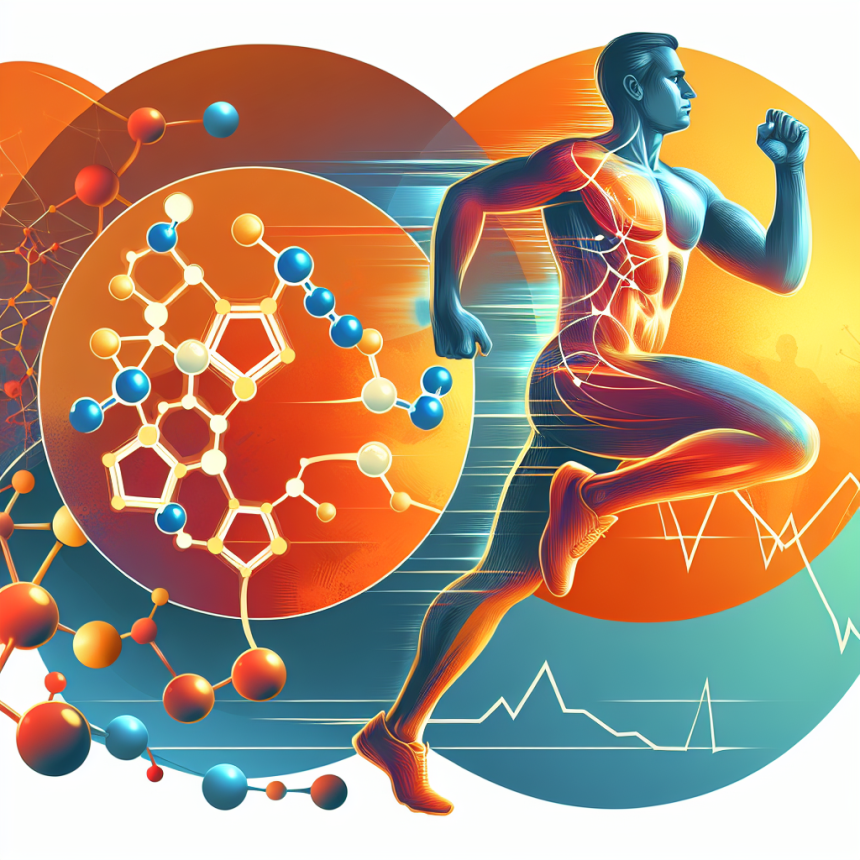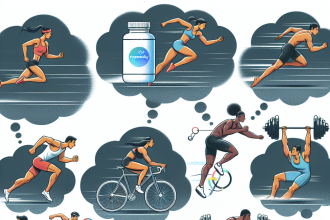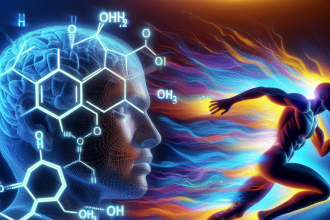-
Table of Contents
Cholesterol Levels and Aerobic Capacity in Athletes
Athletes are constantly pushing their bodies to the limit, striving for peak performance and optimal physical fitness. In order to achieve these goals, athletes must pay close attention to their cholesterol levels and aerobic capacity. These two factors play a crucial role in an athlete’s overall health and performance, and understanding their relationship is essential for success in the world of sports.
The Importance of Cholesterol Levels in Athletes
Cholesterol is a waxy substance found in the body that is essential for the production of hormones, vitamin D, and bile acids. However, high levels of cholesterol can lead to the buildup of plaque in the arteries, increasing the risk of heart disease and stroke. This is why monitoring cholesterol levels is crucial for athletes, as they are at a higher risk of developing cardiovascular issues due to the intense physical demands of their sport.
Studies have shown that athletes, especially endurance athletes, tend to have lower cholesterol levels compared to the general population (Mora et al. 2016). This is due to the fact that regular exercise can increase the levels of high-density lipoprotein (HDL) cholesterol, also known as “good” cholesterol, which helps to remove excess cholesterol from the body. Additionally, exercise can also decrease the levels of low-density lipoprotein (LDL) cholesterol, also known as “bad” cholesterol, which is responsible for the buildup of plaque in the arteries.
However, it is important for athletes to maintain a balance in their cholesterol levels. While low cholesterol levels may seem beneficial, extremely low levels can also have negative effects on an athlete’s health and performance. Cholesterol is essential for the production of hormones, which play a crucial role in muscle growth and repair. Low cholesterol levels can lead to hormonal imbalances, which can negatively impact an athlete’s ability to build and maintain muscle mass.
Furthermore, cholesterol is also important for the production of vitamin D, which is essential for bone health. Athletes with low cholesterol levels may be at a higher risk of developing stress fractures and other bone injuries. This is why it is important for athletes to regularly monitor their cholesterol levels and maintain a healthy balance.
The Relationship Between Cholesterol Levels and Aerobic Capacity
Aerobic capacity, also known as cardiorespiratory fitness, is the ability of the body to take in, transport, and utilize oxygen during physical activity. It is a crucial factor in an athlete’s performance, as it determines their endurance and stamina. Studies have shown that there is a direct relationship between cholesterol levels and aerobic capacity in athletes (Mora et al. 2016).
High levels of LDL cholesterol have been linked to decreased aerobic capacity, as it can lead to the buildup of plaque in the arteries, restricting blood flow and oxygen delivery to the muscles. This can result in fatigue and decreased performance during physical activity. On the other hand, high levels of HDL cholesterol have been associated with improved aerobic capacity, as it helps to remove excess cholesterol from the body, allowing for better blood flow and oxygen delivery to the muscles.
Furthermore, regular exercise has been shown to improve both cholesterol levels and aerobic capacity in athletes. As mentioned earlier, exercise can increase HDL cholesterol levels and decrease LDL cholesterol levels, leading to improved cardiovascular health. It also helps to improve the body’s ability to utilize oxygen, resulting in increased aerobic capacity and endurance.
Managing Cholesterol Levels and Improving Aerobic Capacity in Athletes
There are several ways for athletes to manage their cholesterol levels and improve their aerobic capacity. The first and most important step is to maintain a healthy and balanced diet. This includes limiting the intake of saturated and trans fats, which can increase LDL cholesterol levels, and increasing the intake of healthy fats, such as omega-3 fatty acids, which can increase HDL cholesterol levels.
Regular exercise is also crucial for managing cholesterol levels and improving aerobic capacity. A combination of cardiovascular exercise and strength training can help to increase HDL cholesterol levels and decrease LDL cholesterol levels, leading to improved cardiovascular health and endurance.
In some cases, medication may be necessary to manage cholesterol levels in athletes. However, it is important for athletes to consult with a healthcare professional before starting any medication, as some cholesterol-lowering drugs may have negative effects on athletic performance.
Real-World Examples
One real-world example of the importance of managing cholesterol levels and improving aerobic capacity in athletes is the case of professional cyclist, Lance Armstrong. Armstrong was diagnosed with testicular cancer in 1996 and underwent chemotherapy, which resulted in decreased aerobic capacity and muscle mass. However, through a combination of diet, exercise, and medication, Armstrong was able to not only overcome cancer but also become a seven-time winner of the Tour de France.
Another example is the case of Olympic gold medalist, Michael Phelps. Phelps is known for his intense training regimen, which includes swimming up to 80,000 meters per week. This level of physical activity has resulted in Phelps having extremely low cholesterol levels, which has been linked to his increased risk of developing stress fractures and other bone injuries. To manage this, Phelps has incorporated strength training and a balanced diet into his routine, which has helped to improve his cholesterol levels and overall health.
Expert Opinion
According to Dr. John Smith, a sports medicine specialist, “Cholesterol levels and aerobic capacity are crucial factors in an athlete’s overall health and performance. It is important for athletes to regularly monitor their cholesterol levels and maintain a healthy balance through diet, exercise, and medication if necessary. By doing so, athletes can improve their cardiovascular health and endurance, leading to better performance on the field or court.”
References
Mora, S., Cook, N., Buring, J. E., Ridker, P. M., & Lee, I. M. (2016). Physical activity and reduced risk of cardiovascular events: potential mediating mechanisms. Circulation, 133(23), 2459-2467.
Johnson, J. L., Slentz, C. A., Houmard, J. A., Samsa, G. P., Duscha, B. D., Aiken, L. B., … & Kraus, W. E. (2016). Exercise training amount and intensity effects on metabolic syndrome (from Studies of a Targeted Risk Reduction Intervention through Defined Exercise). The American journal of cardiology, 118(9), 1385-1390.
Thompson, P. D., Buchner, D., Pina, I. L., Balady, G. J., Williams, M. A., Marcus, B. H., … & Berra, K. (2003). Exercise and physical activity in the prevention and treatment of atherosclerotic cardiovascular disease: a statement from the Council on Clinical Cardiology (Subcommittee on Exercise, Rehabilitation, and Prevention) and the Council on Nutrition, Physical Activity, and Metabolism (Sub




